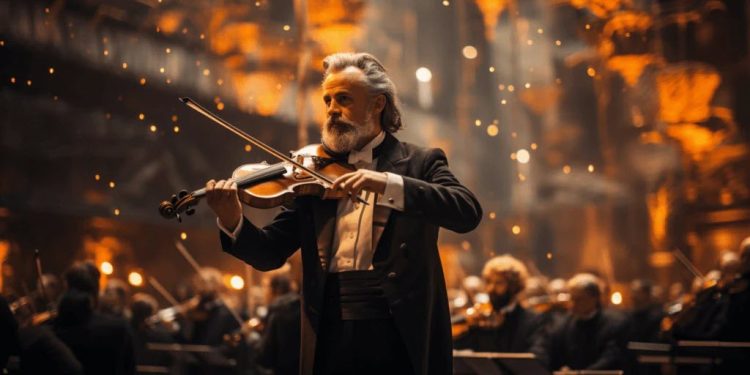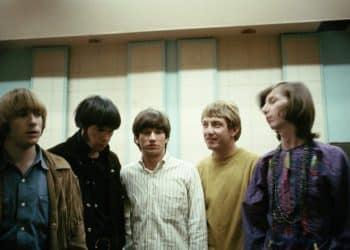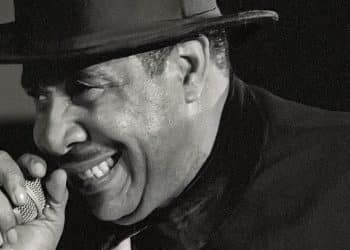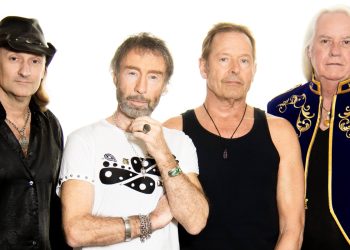Classical music has a unique power—its timeless melodies, emotional depth, and brilliant craftsmanship continue to captivate hearts centuries after they were first heard. Whether it’s the thunderous drama of Beethoven, the divine serenity of Mozart, or the breathtaking beauty of Debussy, these masterpieces have shaped the very soul of music as we know it. They’ve echoed through royal courts, concert halls, films, and even pop culture, transcending borders and generations. But among thousands of celebrated works, a handful stand out as truly iconic—the pieces that define the genre, stir our emotions, and leave us breathless. In this article, we count down the Top 15 Most Popular Classical Music Pieces of All Time—not just based on fame, but on their enduring legacy, emotional impact, and sheer musical brilliance. From Baroque to Romantic to early modern, these compositions represent the pinnacle of human creativity. Whether you’re a seasoned aficionado or a curious newcomer, get ready for a journey through some of the most powerful, beautiful, and unforgettable music ever written. Turn up the volume and prepare to be inspired—these are the classical pieces the world will never stop listening to.
1. Ludwig van Beethoven – Symphony No. 9 in D minor, Op. 125 (“Choral”) – 1824
Beethoven’s Ninth Symphony is a towering achievement in the history of music. Premiered in 1824, it was revolutionary for being the first major symphony to incorporate vocal soloists and a full chorus in its final movement—an audacious move that redefined the symphonic form. The famous “Ode to Joy” theme, based on Friedrich Schiller’s poem, radiates with idealism and unity, making it a timeless anthem for peace and brotherhood. Each movement of the symphony builds in scope and ambition, culminating in a finale so grand and emotionally charged that it still stuns audiences today. Even more remarkable, Beethoven composed and conducted it while completely deaf, relying on his inner ear to bring forth one of the most powerful musical statements ever written. The Ninth is not only a marvel of structure and expression; it’s a spiritual and philosophical journey that continues to resonate across cultures and centuries.
2. Wolfgang Amadeus Mozart – Requiem in D minor, K. 626 – 1791
Mozart’s Requiem is shrouded in mystery and emotion. Left unfinished at his death in 1791, it’s a hauntingly beautiful mass for the dead that feels almost prophetic. Commissioned anonymously by a nobleman, the piece became Mozart’s final work, and his student Franz Xaver Süssmayr completed it according to his sketches. From the thunderous “Dies Irae” to the aching “Lacrimosa,” the music captures the fear, grief, and hope that come with contemplating mortality. Despite being a liturgical piece, it moves with operatic intensity and drama, showcasing Mozart’s unparalleled ability to channel human emotion. The Requiem is more than a funeral mass—it’s a glimpse into Mozart’s soul, a farewell wrapped in divine harmony, and one of the most emotionally gripping works in the classical canon.
3. Johann Sebastian Bach – Toccata and Fugue in D minor, BWV 565 – c.1704
Bach’s Toccata and Fugue in D minor is one of the most iconic organ works ever composed. Believed to be written around 1704, possibly when Bach was still in his twenties, the piece opens with a thunderous toccata—dramatic, powerful, and instantly recognizable. The following fugue showcases Bach’s genius for intricate counterpoint, weaving together multiple voices with both mathematical precision and expressive depth. Although its authorship has been debated, its popularity is undisputed. Often associated with Gothic imagery and horror films, the piece has transcended classical concert halls and embedded itself in pop culture. Whether performed on a grand pipe organ or reimagined for orchestra, its haunting grandeur continues to captivate listeners, making it a cornerstone of Baroque music and a thrilling introduction to Bach’s genius.
4. Ludwig van Beethoven – Symphony No. 5 in C minor, Op. 67 – 1808
Beethoven’s Fifth Symphony is arguably the most famous symphony in history, opening with a four-note motif that has become a universal symbol for fate knocking at the door. Premiered in 1808 in a chilly Vienna concert hall, the work bursts with drama, urgency, and triumph. Each movement propels forward with relentless energy, culminating in a dazzling finale that transforms the stormy C minor into a victorious C major. What makes this symphony revolutionary is its emotional narrative—a journey from darkness to light. Beethoven masterfully uses rhythmic motifs, dynamic contrasts, and orchestral color to tell a story that speaks across ages. The Fifth wasn’t just a musical work; it was a statement of resilience, a declaration of artistic independence, and a blueprint for Romantic expression. Its power remains undiminished, thrilling audiences with every performance.
5. Antonio Vivaldi – The Four Seasons – 1725
Vivaldi’s The Four Seasons, published in 1725 as part of Il cimento dell’armonia e dell’inventione, is a revolutionary set of four violin concertos depicting the essence of spring, summer, autumn, and winter. Each concerto is paired with a sonnet, possibly written by Vivaldi himself, guiding the listener through birdsong, thunderstorms, harvest dances, and icy winds. What makes this work so extraordinary is its vivid programmatic nature—it paints musical pictures centuries before film scores existed. The violinists take center stage with dazzling virtuosity, mimicking chirping birds or shivering in the cold, while the orchestra creates rich, evocative soundscapes. The Four Seasons is not only a masterclass in Baroque violin technique but also a timeless celebration of nature’s beauty and drama. It remains one of the most beloved and frequently performed classical works to this day.
6. Pyotr Ilyich Tchaikovsky – Swan Lake, Op. 20 – 1877
Premiering in 1877, Tchaikovsky’s Swan Lake redefined ballet music forever. With its lush orchestration, lyrical melodies, and emotional depth, it transcends the stage to become a full-bodied symphonic experience. The story follows the tragic romance between Prince Siegfried and the enchanted Swan Princess, Odette, unfolding through sweeping waltzes, delicate adagios, and fiery dances. Tchaikovsky’s music brings the fantasy to life, from the haunting oboe solo of the Swan Theme to the thunderous climax of betrayal and fate. Though its initial reception was lukewarm, later productions turned Swan Lake into a global phenomenon. Today, it is not only a ballet staple but also a cultural touchstone, embodying the Romantic ideal of love, loss, and transformation. The score remains one of Tchaikovsky’s most enduring masterpieces, captivating audiences with its beauty and emotional resonance.
7. George Frideric Handel – Messiah – 1742
Handel’s Messiah, first performed in Dublin in 1742, is a monumental oratorio that has become synonymous with sacred music. Composed in just 24 days, this three-part work draws from biblical texts to tell the story of Christ’s birth, death, and resurrection. It’s a masterclass in dramatic pacing, choral writing, and emotional expression. From the serene beauty of “He Shall Feed His Flock” to the triumphant “Hallelujah” chorus, every movement is crafted with clarity and conviction. Though intended for Easter, Messiah is now a Christmas tradition around the world. Its jubilant choruses and poignant solos are celebrated by amateur choirs and professional ensembles alike. Handel himself led performances for charity, and the work has continued to inspire generosity and spiritual reflection for centuries. It’s a testament to the power of music to move hearts and uplift souls.
8. Franz Schubert – Ave Maria (Ellens dritter Gesang), D.839 – 1825
Schubert’s Ave Maria, composed in 1825, is often mistaken for a setting of the traditional Catholic prayer, but it originally set a German translation of Walter Scott’s poem “The Lady of the Lake.” Despite this, its serene melody and spiritual atmosphere have made it a favorite for religious and secular occasions alike. The piece’s gentle arpeggios and soaring vocal line create a sense of peace and devotion that transcends language. Whether sung in Latin or performed instrumentally, Ave Maria feels intimate and reverent. Schubert’s gift for melody shines brightly here, capturing the listener’s heart with simplicity and grace. It has become a universal symbol of consolation and purity, performed at weddings, funerals, and countless sacred spaces around the world.
9. Claude Debussy – Clair de Lune – 1905
Clair de Lune is perhaps Debussy’s most beloved piano work, a shimmering gem of musical Impressionism. Though composed in the 1890s, it was published in 1905 as part of his Suite bergamasque. Inspired by Paul Verlaine’s poem of the same name, the piece evokes moonlight not with literal depiction but with mood, color, and suggestion. Its gentle, flowing melody and lush harmonies create a dreamlike atmosphere that invites quiet introspection. The piece has become synonymous with tenderness and nostalgia, featured in countless films and personal moments. Debussy’s innovative use of tone and texture here marked a break from traditional Romanticism, opening a new world of musical expression. Clair de Lune doesn’t just describe moonlight—it feels like moonlight, soft and luminous, dancing across the keys.
10. Maurice Ravel – Boléro – 1928
Ravel’s Boléro, premiered in 1928, is one of the most audacious and hypnotic orchestral works ever written. Originally composed as a ballet, it features a single, unchanging rhythmic pattern and a repeating melody that slowly builds in orchestration and volume over fifteen minutes. What starts with a whisper from the snare drum and solo flute swells into a full orchestral blaze, creating a sense of tension and inevitability. Ravel called it a “study in orchestration,” and indeed, the genius lies in how he transforms repetition into revelation. Each instrumental entrance adds new color and intensity until the piece reaches its explosive climax. Boléro defies classical norms yet remains irresistibly engaging. It’s a musical crescendo without release—seductive, relentless, and unforgettable.
11. Johann Pachelbel – Canon in D Major – c.1680
Pachelbel’s Canon in D is a Baroque masterpiece that has become an unexpected pop culture icon. Composed around 1680, it was largely forgotten until its rediscovery in the 20th century, when it rose to fame as a wedding favorite and soundtrack staple. The piece is structured around a ground bass—a repeating eight-note pattern in the cello—over which three violins weave increasingly elaborate variations. Its harmonic simplicity is its genius: the progression is soothing, balanced, and emotionally resonant. The canon unfolds with graceful inevitability, moving from calm to cathartic with a sense of timeless elegance. Though originally intended as chamber music, it has been arranged for everything from full orchestra to guitar duets, making it incredibly versatile. Canon in D evokes a sense of serenity and unity, capturing life’s gentle flow and emotional undercurrents. It may not have been famous in Pachelbel’s lifetime, but it now stands as one of the most performed and beloved classical pieces ever written.
12. Ludwig van Beethoven – Moonlight Sonata (Piano Sonata No. 14 in C♯ minor “Quasi una fantasia”, Op. 27 No. 2) – 1802
Beethoven’s Moonlight Sonata, composed in 1801 and published in 1802, is a piano work that feels deeply personal and introspective. Officially titled Sonata quasi una fantasia, it breaks from the traditional fast-slow-fast sonata structure, beginning with a hauntingly slow and lyrical movement that has enchanted listeners for centuries. The nickname “Moonlight” was added posthumously by a poet who likened the first movement to moonlight shining on Lake Lucerne. The piece’s hypnotic arpeggios and melancholy melody evoke a quiet longing, drawing the listener into an intimate emotional space. The second movement offers a brief, graceful respite before the third explodes with stormy passion, showcasing Beethoven’s fiery intensity. This work is a perfect example of his ability to blend tenderness and turbulence, forging a new path between Classical restraint and Romantic expression. Whether played in a concert hall or a quiet living room, the Moonlight Sonata remains a profound and affecting journey.
13. Wolfgang Amadeus Mozart – Eine kleine Nachtmusik, K. 525 – 1787
Mozart’s Eine kleine Nachtmusik (“A Little Night Music”), composed in 1787, is the epitome of Classical elegance. Though originally written for a string quartet with added bass, it is often performed by larger string ensembles, and its cheerful, graceful melodies have made it one of the most recognizable pieces in the classical repertoire. The first movement’s buoyant theme is instantly familiar—it sparkles with clarity and balance, capturing Mozart’s genius for melodic invention. The following movements—romantic Romanze, playful Menuetto, and energetic Rondo—create a charming suite full of wit and refinement. Written during a time of personal and professional upheaval, the piece nonetheless radiates joy and polish. It’s a masterclass in structure and style, often used to represent the Classical era’s ideals of beauty and proportion. Eine kleine Nachtmusik isn’t just background music for garden parties—it’s a brilliant work of art that continues to delight and inspire.
14. Richard Wagner – Ride of the Valkyries (from Die Walküre) – 1870
Wagner’s Ride of the Valkyries, premiered as part of Die Walküre in 1870, is a thunderous and exhilarating orchestral storm. Originally the opening to Act III of the opera, it captures the imagery of Valkyries—mythical warrior maidens—riding across the sky to carry fallen heroes to Valhalla. The piece explodes with galloping rhythms, bold brass fanfares, and sweeping string lines, making it one of the most recognizable and cinematic moments in classical music. Wagner’s gift for leitmotif and orchestral color is on full display here, building a musical narrative that feels larger than life. Beyond the opera house, the Ride has been famously featured in films, military parades, and even cartoons, symbolizing dramatic action and epic scope. It’s a prime example of Wagner’s ability to fuse music and myth into an overwhelming sensory experience. Whether in its operatic context or standing alone, Ride of the Valkyries remains an adrenaline-fueled thrill ride.
15. Gustav Holst – The Planets, Op. 32 – 1918
Holst’s The Planets, completed in 1917 and first performed in 1918, is a celestial suite that redefined orchestral music in the 20th century. Each of its seven movements is named after a planet and its astrological character, from the warlike fury of “Mars” to the serene mystery of “Neptune.” The opening of “Mars” is a jarring, relentless rhythm that later inspired film composers like John Williams. “Jupiter, the Bringer of Jollity” is perhaps the most beloved, bursting with joyful themes and even containing a noble hymn that has become a British patriotic song. Holst’s orchestration is visionary, using offstage choirs, unusual instruments, and dynamic contrasts to evoke the vastness of space and the emotional range of the cosmos. The Planets isn’t a scientific exploration—it’s a spiritual and psychological journey through the universe, blending mysticism, mythology, and modernism in one dazzling package. It remains a staple of concert halls and a favorite among audiences and performers alike.









